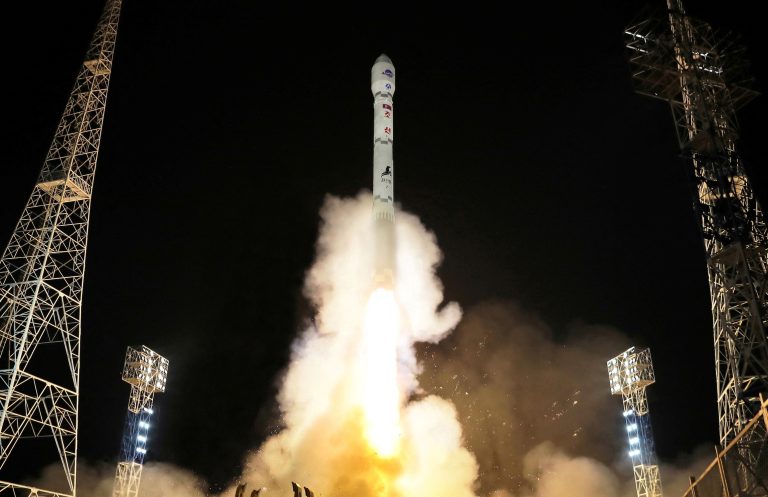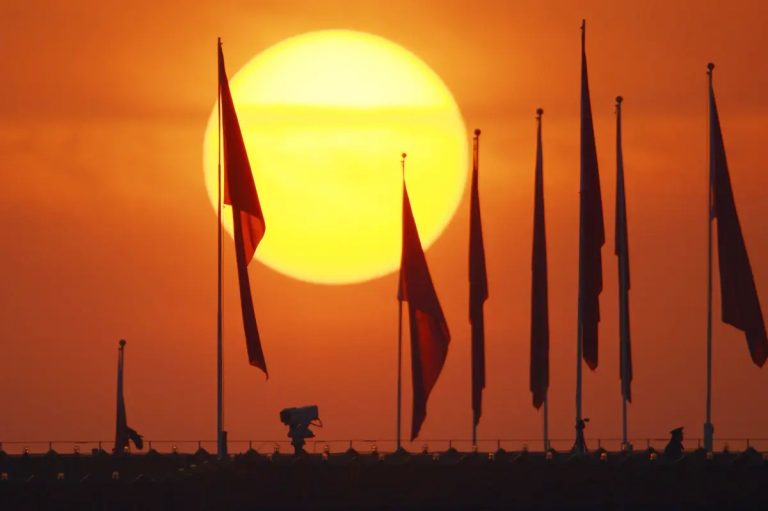Relations with South Korea and the diplomatic situation in East Asia generally deteriorated following North Korea’s Nov. 21 launch of its first spy satellite, which soon began transmitting data, including on U.S. military positions and the White House, according to North Korean state media.
The rocket is named Chollima-1, which means “thousand-mile steed” and is a common propaganda motif in North Korea. The satellite itself was christened “Malligyong-1”, which means “telescope.”
A communist dictatorship armed with nuclear weapons, North Korea is barred by the United Nations from possessing or launching ballistic missiles, including rockets for placing satellites in orbit because they can be used as missiles.
The launch, which comes after two failed attempts in May and August, was preceded by warnings and condemnations from South Korea, Japan, the U.S, and other countries.
Over the years, North Korea has built up a sizeable force of strategic rockets, including intercontinental ballistic missiles that can reach the mainland U.S. It has also conducted six underground nuclear bomb tests since 2006.
South Korea scraps 2018 inter-Korean military agreement
Success
You are now signed up for our newsletter
Success
Check your email to complete sign up
The launch of the Malligyong-1 prompted South Korea to suspend an inter-Korean military agreement that was signed in September 2018. That accord, the Comprehensive Military Agreement (CMA), had seen both sides reduce the amount of troops, sentries, and heavy weaponry deployed along or near the Demilitarized Zone (DMZ) that divides the Koreas.
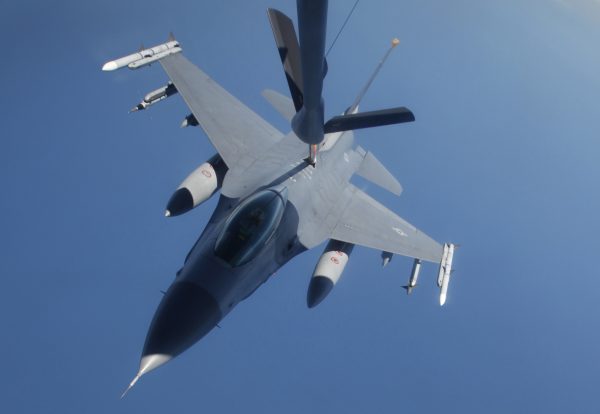
North and South Korea both claim each other’s territory and remain technically at war despite signing an armistice in 1953, three years after North Korea invaded the South.
Han Duck-soo, prime minister of South Korea, condemned the satellite launch during an emergency cabinet meeting on Nov. 22, saying it was “a grave violation of U.N. Security Council resolutions that prohibit any launch by North Korea using ballistic missile technology and a direct provocation that threatens our security.”
He also said it breached the spirit of the CMA, which was supposed to reduce hostility and improve relations between Seoul and Pyongyang.
On Nov. 23, following the South’s suspension of parts of the CMA, North Korea abandoned the agreement in its entirety, saying that it would redeploy troops and military hardware to fortify the front line.
Significantly, the CMA’s provisions mandated a large no-fly zone over and near the inter-Korean border, something that was criticized as a concession to North Korea as it limited the more advanced South Korean military’s ability to conduct aerial reconnaissance and monitor northern troops.
South Korean officials under the conservative administration of President Yoon Suk-yeol, elected last year, had already floated scrapping or rolling back the CMA, as noted in a Nov. 28 analysis piece by The Diplomat.
- President Yoon Hits Back at ‘Wolf Warrior’ Rhetoric From China’s Ambassador Xing Haiming
- US Lawmakers Voice Concerns Over the CCP’s Censorship of Shen Yun in South Korea
South Korea is also planning to launch its first reconnaissance satellite, though Seoul is not subject to the same U.N. restrictions as North Korea. The southern launch was scheduled for Nov. 30 but has been delayed on account of bad weather.
“The North Korean regime is entirely responsible for the whole of this situation, and if North Korea makes any additional provocation, our military will immediately and vigorously punish North Korea based on the firm South Korea-U.S. joint defense posture,” said Heo Tae-keun, South Korea’s Deputy Minister for National Defense Policy, at a Nov. 22 press conference announcing the end of the DMZ no-fly-zone.
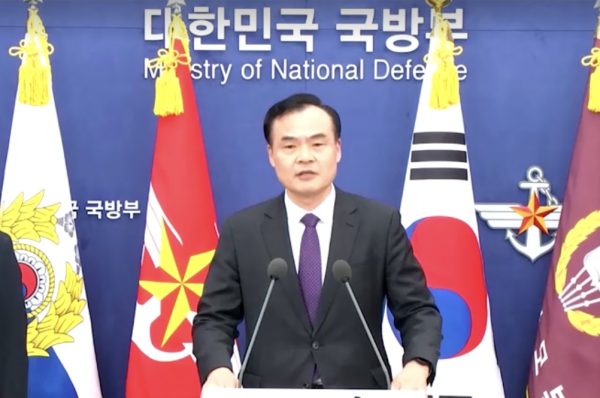
International response
The U.N., United States, Japan, and other allied countries criticized Pyongyang for the satellite launch, while China — which has issued condemnations of North Korea in the past — failed to do so, while South Korean officials believe that Russia provided North Korea with technical aid to put the Malligyong-1 into orbit.
Meanwhile, Communist China did not condemn the launch, but its foreign ministry called for all parties to ensure peace and stability on the Korean peninsula. Beijing is a long-time backer of North Korea, having rescued it from being vanquished by U.N. forces in the Korean War.
North Korea’s state media claimed that their satellite was able to observe the White House, as well as ships and facilities at U.S. naval bases such as Norfolk, Pearl Harbor, and Guam.
Photos released by the impoverished and repressive regime show North Korea’s leader Kim Jong Un smiling with military officials, technicians, as well as his 10-year-old daughter, Kim Ju Ae, as they review photos taken from the satellite.
The Malligyong-1 also reportedly took pictures of Busan, a port city in southeastern Korea, which at the time was hosting the American aircraft carrier Carl Vinson. South Korea’s defense minister Shin Won-sik visited the carrier on Nov. 22.
In a Nov. 24 call between U.S. Secretary of State Antony Blinken, South Korea’s Foreign Minister Park Jin, and Japanese Foreign Minister Kamikawa Yoko, the top diplomats of the three countries “strongly condemned the [North Korean] launch for its destabilizing effect on the region,” according to the State Department.
The State Department added that the U.S., South Korea, and Japan called upon the international community to come together to prevent North Korea’s “procurement activities and stem the flow of revenue supporting its unlawful WMD [weapons of mass destruction] and ballistic missile programs.”
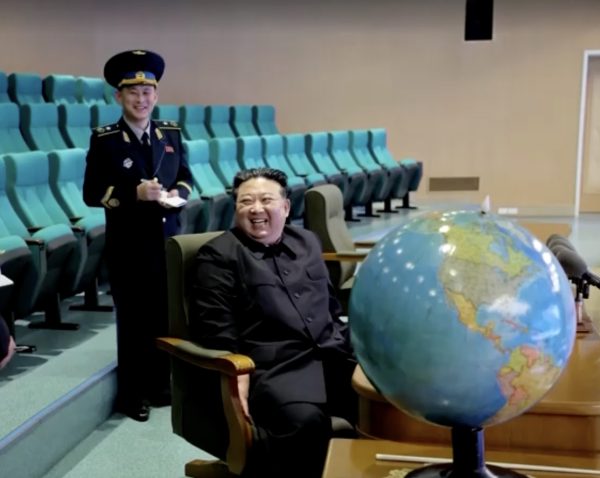
On Monday, Nov. 27, Senior U.N. official Khaled Khiari told the 15-member Security Council that while North Korea did notify the Japanese Coast Guard of the upcoming satellite launch, it did not inform the International Maritime Organization, the International Civil Aviation Organization, or the International Telecommunications Union.
North Korea’s rocket launches “represent a serious risk to international civil aviation and maritime traffic,” and reiterated the U.N.’s ban on such activity by Pyongyang, Khiari said.
The North Korean regime maintains that its development of nuclear weapons and ballistic missiles is necessary defend itself against the United States, and that the Nov. 21 launch was a “full-fledged exercise of the right to self-defense the DPRK armed forces can neither concede even a bit nor stop, even a moment,” Pyongyang’s state broadcaster KCNA said, using the initials of the North’s official name, the Democratic People’s Republic of Korea.
North Korea plans to develop more spy satellites in the near future.
According to KCNA, North Korean premier Kim Tok Hun applauded the launch of Malligyong-1 as a milestone to developing the ability of his country’s “capability for striking the whole world.”



